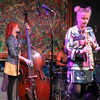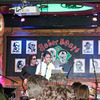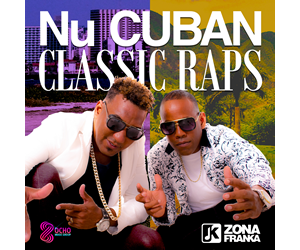Indice - Table of contents
New Stuff[hide]
Reportes: From The St... : Jazz Plaza ...
Fotos: Tom Ehrlich : Irakere 50th Annivers...
Fotos: Tom Ehrlich : Irakere
Resenas: Joey Altruda Presents: El Gran ...
Reportes: From The St... : Cubadisco 2...
Timbapedia: 09. Interviews -... : Carlos del Pino ...
Fotos: Tom Ehrlich : 2023 Monterey Jazz Fe...
Fotos: Tom Ehrlich : 2023 Monterey Jazz Fe...
Fotos: Tom Ehrlich : 2023 Monterey Jazz Fe...
Fotos: Tom Ehrlich : 2023 Monterey Jazz Fe...
Grupos: Tirso Duarte
Grupos: Tirso Duarte : Discography
Grupos: Charanga Habaner... : 8. El bla bla bla
Grupos: Pupy y los que S... : Tirso Duarte
Photos of the Day [hide]
SpanishEnglishDiscography - El puente - Dios sabe
Dios Sabe
Athough the lead vocal leaves something to be desired in the intonation department, this is the most valuable track on the album -- it's one of Manolín's all-time best songs and by far the best of the ones which have never been recorded in the studio. It's also very hard to find on live bootleg concerts because Manolín was just starting to work it into his show when he left Cuba for the first time. It also had the bad fortune of coming at the point in the set where the Cuban bootleggers' C-74 cassette tapes would need to be turned over!
Dios sabe is the dramatic final installment in what I think of as the Luis Bu Timba Dura Trilogy -- three minor key arrangements, played at breakneck tempos in a wicked, driving, ultra-funky 3•2 groove. The three are similar enough to mistake for one another at first, but each has its own hooks and its own personality, like three movements of a suite, and each is bursting with great musical ideas. The first to be added to the live show was Y ahora baila, discussed above. It starts in G minor and modulates dramatically down to F# minor. The second component of the trilogy was Jaque mate, in F minor.The two songs were the opening and title tracks, respectively, of Manolín's final Cuban studio album and tracks 2 & 8 of "El puente". Dios sabe starts where Jaque mate left off, in a deep, dark F minor, and then Dr. Bu pulls off one of his most gorgeous and dramatic modulations to return to G minor where Y ahora baila's instrumental intro began.
Manolín's a capella adventure comes to a merciful end at 1:56 as he cries "Jeáns!", referring to saxophonist/musical director Jeáns Valdés, one of Chucho's many musical relatives and quite a colorful character in his own right, as well as the second most active arranger on Manolín's creative team. El chamaco mayor gives the signal, Reinier hits the kick on 3 and the snare on 4, and it's off to the races -- 109 beats per minute with nothing remotely resembling salsa romantica to be found anywhere. What amazes me is that this track also ends at 109 beats per minute. To generate anything close to this level of excitement, a Latin band will usually speed up gradually over the course of the arrangement, and one of the reasons that some purists complain about the use of click tracks in the studio is that it restrains this natural speeding up process. But the "El puente" band seems to be able to lock onto a tempo for an extended period of time and still keep breathing new force and energy into it.
After a beautifully-integrated quote from Rubén Blades' Plastico ("se le ve en la cara, se le ve en la cara, pero nunca en el corazón") comes the soaring, symphonic Luis Bu mambo that modulates to G minor. [audio example 14] And not to be overlooked is the final coro, which quotes the old Ritmo Oriental song Al que lo tocó le tocó as it breaks into a rousing bomba section.[audio example 15]























